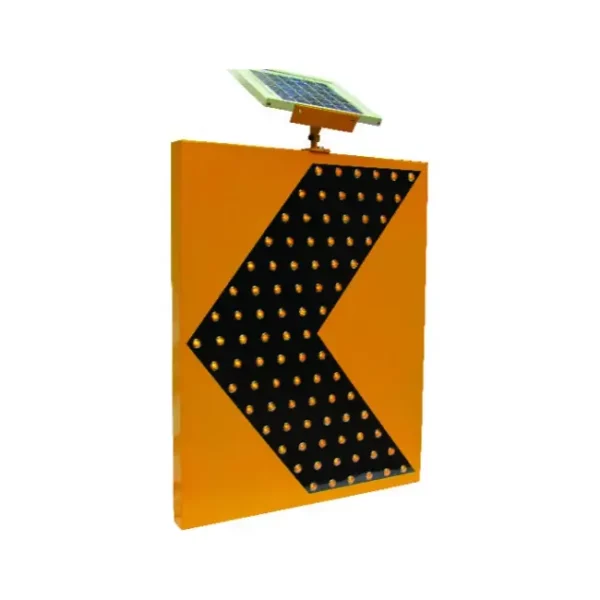Collapsible or stackable solar-powered traffic signs offer several advantages:
Portability and Storage:
- Ease of Transport: These signs can collapse or stack, making them easy to transport to various locations or storage areas.
Space Efficiency:
- Compact Storage: Collapsible or stackable designs save space when not in use, allowing for efficient storage in limited spaces.
Quick Deployment:
- Swift Setup: They can be rapidly deployed at different sites or events, reducing the time needed for installation.
Versatility:
- Adaptability: Collapsible or stackable signs are versatile, suitable for temporary road conditions, events, or construction sites.
Flexibility in Use:
- Multiple Configurations: These signs offer flexibility, allowing for various configurations to meet specific signage needs.
Reduced Installation Costs:
- Cost Savings: Faster deployment and easier setup lead to reduced labor costs associated with installation.
Durability:
- Sturdy Construction: Despite their collapsible nature, these signs maintain durability and withstand outdoor conditions.
Compliance with Regulations:
- Meeting Standards: They adhere to traffic sign regulations and standards, ensuring proper messaging and visibility.
Solar-Powered Efficiency:
- Energy Sustainability: Solar-powered functionality reduces reliance on external power sources, offering energy-efficient operation.
Environmentally Friendly:
- Reduced Footprint: These signs contribute to environmental sustainability by minimizing materials and space needed for storage or transportation.
Customization Options:
- Tailored Signage: Some designs allow for interchangeable messages or symbols, offering adaptable messaging for different situations.
Safety Enhancement:
- Improved Visibility: These signs maintain high visibility, enhancing safety by providing clear instructions or warnings to drivers.
Collapsible or stackable solar-powered traffic signs provide practical advantages in terms of portability, space efficiency, versatility, and cost savings, solar powered traffic signs while also ensuring compliance with regulations and contributing to safer road environments.
What factors should be considered when selecting the appropriate solar powered traffic signs?
When selecting solar-powered traffic signs, several factors should be considered:
Visibility Requirements:
- Visibility Distance: Consider the required visibility distance based on the sign’s location and purpose.
Sign Size and Type:
- Appropriate Size: Choose the right size and type of sign based on the intended message and viewing distance.
Solar Efficiency:
- Solar Capability: Assess the solar efficiency and charging capacity of the sign’s solar panels to ensure adequate power supply.
Weather Resistance:
- Durability: Consider the sign’s ability to withstand various weather conditions prevalent in the area of deployment.
LED Brightness:
- Optimal Brightness: Ensure the LED brightness meets visibility standards and is suitable for day and nighttime visibility.
Regulatory Compliance:
- Adherence to Standards: Select signs that comply with local traffic sign regulations and standards.
Message Customization:
- Message Flexibility: Opt for signs that allow for easy customization of messages to suit changing needs.
Installation Requirements:
- Ease of Installation: Consider the ease of installation and whether it requires specialized tools or expertise.
Energy Efficiency:
- Power Consumption: Evaluate the energy efficiency of the sign to ensure minimal power consumption.
Maintenance Needs:
- Maintenance Requirements: Assess the maintenance needs of the sign, including cleaning and battery upkeep.
Sign Material:
- Material Durability: Consider the durability and longevity of materials used in the sign’s construction.
Cost Consideration:
- Budget Alignment: Ensure the chosen sign fits within the allocated budget while meeting quality and functionality requirements.
Environmental Impact:
- Sustainability: Consider signs that minimize environmental impact, such as through energy-efficient operations or recyclable materials.
Warranty and Support:
- After-Sales Service: Assess available warranties and support services to ensure reliable operation and quick resolution of issues.
Traffic Conditions:
- Traffic Flow: Consider the traffic volume and conditions in the deployment area to select signs suitable for specific traffic situations.
Visibility Angle:
- Visibility Range: Choose signs with optimal visibility angles to ensure clear visibility for drivers from different perspectives.
Evaluating these factors comprehensively will help in selecting the most appropriate solar-powered traffic signs that align with specific needs, standards, and environmental conditions for efficient and effective traffic management.
